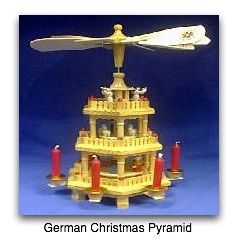Christmas Traditions
12/18/2005 15:50 Filed in: Miscellaneous

2. Gift Giving, as a part of the Christmas tradition, stems from an ancient Roman custom called Strenae, where the Roman citizens would give "good luck" gifts of fruit, pastries, or gold to their friends on New Years Day. In England the tradition later survived as what was called "Boxing Day." On Dec. 26 the priests used to open the alms-boxes and distribute the contents among the poor in the parish. Later, it became customary to give Christmas "boxes" to the servants and public workers.

4. Stockings were actually shoes filled with straw and carrots and left by children for the horse of Saint Nicholas and placed in front of the fireplace. This practice, beginning around 1100 A.D., assumed that the straw and carrots would be replaced by gifts and within a few decades evolved into the hanging of stockings from the mantle of the fireplace.
5. The Mistletoe was, like many of the evergreens, brought inside during the winter months to serve as a reminder that Spring would come, and was said to have such a spiritual influence that if two enemies met under a branch of the mistletoe they would drop their weapons and embrace. This old belief may have been the origin of the modern custom of kissing under the mistletoe.
6. The Christmas Wreath symbolized the strength of life overcoming the forces of winter. Christians extended this to represent the eternal, unending life promised through Jesus.
7. Holly, with its prickly leaves and wild berries, was adopted by Christians to stand for the crown of thorns and drops of blood worn by Jesus at His crucifixion.
8. Poinsettias, a newer tradition developed by a U.S. minister to Mexico in the 1800's, were symbolized by their green and red Christmas colors. The green represented the continuance of life and the red stood for the blood of Christ.
9. Caroling is said to have begun around 1818 by Josef Mohr, the parish priest of Oberndorf. It is said that on Christmas Eve Father Mohr wrote the three stanzas of "Silent Night" as a surprise for his parishioners because he felt they would be disappointed when they learned that the parish organ had broken down. Earlier in the day he had blessed a newborn baby and it is likely that the first stanza was inspired by this event. In order to have some music for his poem he rushed over to his friend Franz Gruber, a teacher and church organist. Within a few hours the melody was completed and at midnight mass that evening the two men sang the masterpiece for the first time.
Source: Unsecured. This information was distributed via a handout in my Sunday School class this morning. If you know a definite source for any of this information, let me know and I will post it here.









